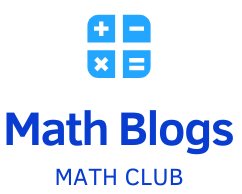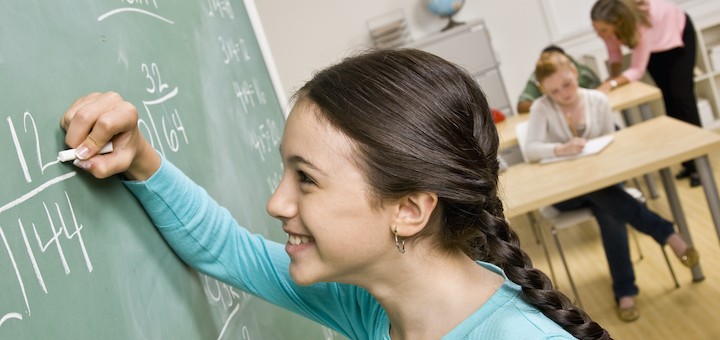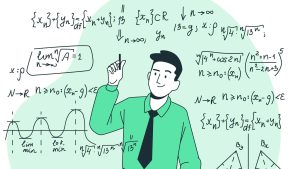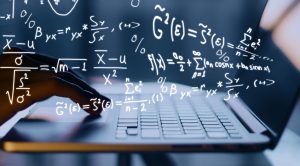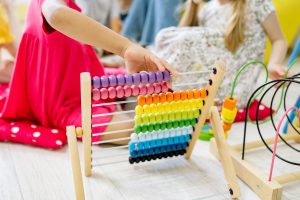Encourage students to ask questions about concepts in order to stimulate curiosity and gain deeper comprehension. Interdisciplinary lessons which link mathematics with other academic subjects also enhance relevance and engagement for their learning experience.
Explaining incorrect and correct worked examples helps students better comprehend what went wrong and how to avoid similar errors in the future. Recognizing progress keeps students motivated as it shows them they can reach success with practice.
1. Visualization
Visualization can be an essential math learning strategy, whether used by young children to understand counting or by college students using representational graphs to understand calculus. Visualization also has tremendous power when used for struggling math concepts or those who struggle with their comprehension due to learning disabilities.
Educators can assist their students in learning mathematics by using a concrete-representational-abstract (CRA) instruction model that employs tools such as number lines, tape diagrams, pictures and graphic organizers to support understanding. Students need plenty of practice using such visual models so they can transfer their knowledge to tackle more challenging problems.
Once students understand how to use tally marks to represent addition problems, you can gradually introduce drawing the problem with numbers and symbols (5 + 3). This approach helps develop flexible mental mathematics vocabulary which they can apply when problem-solving in future.
2. Number Bonds
Understanding number bonds is essential to developing number sense and mental math abilities in children. It teaches them that any whole number can be divided up into pieces to facilitate easier calculation.
By understanding number bonds, children can perform basic arithmetic operations faster and intuitively – for instance if they know 7+3 = 10, they will easily recall this equation and perform addition and subtraction more rapidly and intuitively.
Use worksheets or games to encourage learning. This will also allow teachers to assess student understanding of this important math concept. Also consider including number bonds in stories like Jack and the Beanstalk in order to further embed part-part-whole relationships and prepare your students for handling word problems later in life.
3. Multiplication Tables
Multiplication tables (math times tables) are an essential element of learning math, and students who possess an in-depth knowledge of these fundamental calculations will be better prepared to tackle more advanced challenges more quickly.
Making math time tables more manageable for kids involves encouraging them to identify patterns within numbers – for instance, all multiples of two ending in 0, 2, 4, 6 or 8 can help students recall multiplication facts more quickly.
Another useful strategy is for students to practice writing and reciting multiplication tables daily, both to memorize them and enhance recall speed. Doing this also builds their confidence as they calculate more complex answers, while giving them practice with problem-solving tasks requiring multiplication and division calculations.
4. Subtraction Tables
Free printable subtraction charts and worksheets help students practice basic mathematics skills like subtraction. Keep these colorful worksheets in your homework binder or use online practice!
As part of their study of subtraction tables, introduce your students to various strategies for solving subtraction problems. By giving them more options for each problem, it increases their chances of selecting an effective strategy.
As another good option, compensation recomposes numbers to make subtraction easier mentally. For example, in order to solve 5 – 3, your students could count up from the subtrahend (5 + 3 = 8). Once students grasp this method of decomposing numbers further into ones and tens.
5. Addition Tables
An addition table is a grid that displays the sum of several numbers by organizing them into rows and columns, making it easier for students to calculate totals between two numbers by seeing intersections of row values with column values.
This technique assists students in quickly memorizing addition facts and honing mental math abilities, as well as creating a deeper understanding of arithmetic.
Math can be an intimidating subject that takes more than repetition and memorization to truly comprehend, so take your time when practicing various problem-solving techniques – be patient! Set small goals and celebrate each success along the way! If you find yourself having trouble, seek additional resources such as study groups or tutorials online to support you!
6. Division Tables
Division is the result of learning the relationships between multiplication and division, as well as having knowledge of times tables. Students should practice division with models that support their understanding and strategies that enable them to use models effectively for practice.
Rectangular arrays are an effective visual way of showing how division can divide larger numbers into equal groups, similar to how multiplication uses area models for display purposes. Rectangular arrays also help students see how both operations relate with one another.
Students should begin practicing long division problems without remainders to gain proficiency with each step. They can gradually progress to those that include remainders once they have learned the standard algorithm.
7. Word Problems
Word problems can be an intimidating obstacle for students. But they don’t need to be unsolvable! There are various research-backed strategies that help children build up their problem-solving abilities.
Gaining students’ comprehension that math stories on paper can be turned into equations is key to solving word problems effectively. Once they make this connection, it becomes much simpler for them to connect their conceptual understanding with the procedures needed to solve a given issue.
As they read through a problem and highlight key words and numbers, this helps your students focus on key information and determine whether it requires addition, subtraction, multiplication or division. Next, have them organize all the data gleaned from word problems and drawings into number sentences for easy analysis.
